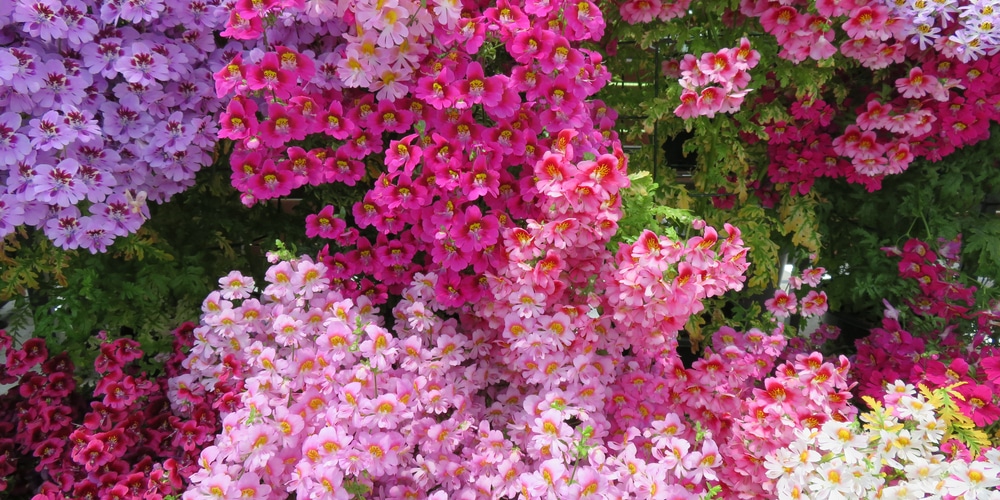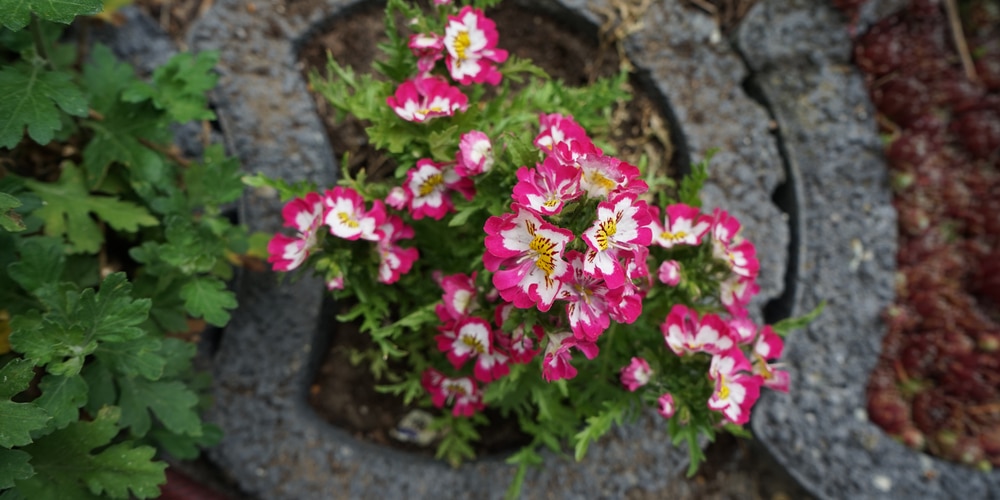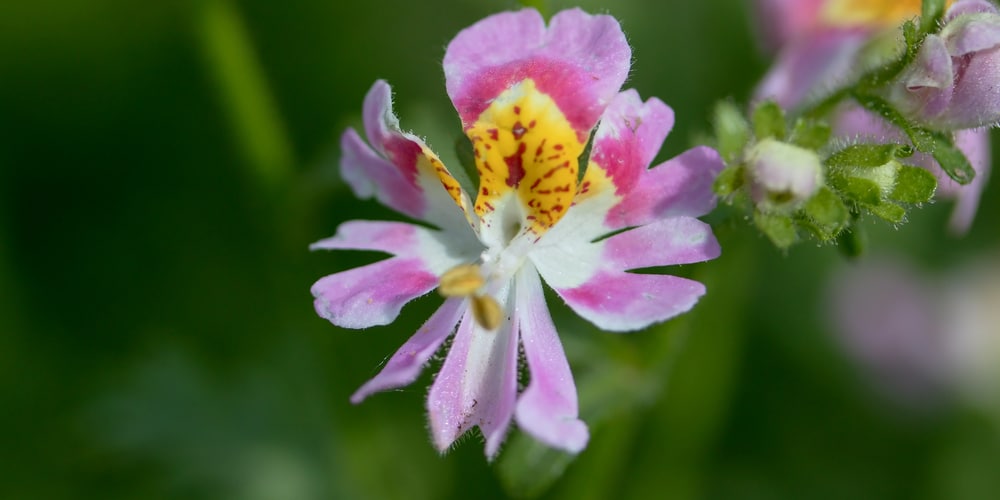Schizanthus orchids are commonly referred to as poor man’s orchids, butterfly flowers, or fringe flowers. They are grown as perennials in most parts of the U.S. The plants need warmth and tend to be sensitive to cold weather, so they may not do well in the northern states. They can be started indoors if you want to give them a head start before transplanting outside at a time when your area is warm; usually, after all, danger of frost has passed.
Schizanthus grow quickly, so they are good for planting in hanging baskets, containers, or large beds. Let’s look at how to grow and care for a poor man’s orchid.
What is a poor man’s orchid?

The poor man’s orchid is part of the Solanaceae family of nightshade plants. They have beautiful flowers that are pink, purple, or red and have yellow and white centers with brown markings. These plants are native to many countries in South America and are also commonly found growing in South Africa.
Poor man’s orchids grow to a height of between 16 to 40 inches, and each plant can produce many flowers throughout the growing season.
How to care for a poor man’s Orchid?
Schizanthus orchids are easy to care for as long as you get their basic care needs right. These flowers are fragrant and will grow in all soil types, but they prefer moist soil with good drainage. Here are some tips to help you grow and care for a poor man’s orchid:
Sunlight needs
Poor man’s orchids need at least 6 hours of sunlight per day or more. If your plants are not getting enough sunlight, they may grow tall and spindly. You can place your plant in an area that gets bright indirect or filtered sunlight. Don’t leave your orchid in the full sun, or its delicate flowers and foliage may suffer from sunburn.
Watering requirements
You will need to water the Schizanthus Orchid regularly throughout the growing season, especially when it is in flower. You can water your poor man’s orchid less in the winter when its dormancy period begins. You should also make sure the soil drains well and doesn’t get waterlogged, or your plant may be affected by root rot.
Fertilization
If you want to get flowers, you will need to make sure you fertilize your plant regularly. You can add liquid fertilizer to the water every two to four weeks. Fertilizers are available that have been designed especially for orchids, or you can use a standard houseplant fertilizer.
Pests and diseases
The poor man’s orchid isn’t very susceptible to pests or disease, but if they do get a little fungus on the leaves, it is easy to wipe off with a damp cloth. Snails can be a problem for outdoor plants, while both indoor and outdoor orchids may occasionally attract sap-sucking insects. Aphids, mealybugs, and spider mites can be controlled using neem oil or an insecticidal spray.
Soil
The Schizanthus Orchid will grow well in most soil types but prefers rich, loamy soil. It is also good at dealing with limey soils that have a lower pH and are slightly acidic. These plants are more versatile than orchids and can also cope with alkaline soils.
Aim to grow your poor man’s orchid in soil with a pH range of between 5.5 and 7.5. Make sure that the soil you use can drain well so that your plant doesn’t become waterlogged. You can add a layer of stones or gravel to the bottom of the pot to help with drainage.
Temperature and humidity
The Schizanthus Orchid will grow best in warm to hot conditions. These plants can grow outdoors in USDA zones 5 to 9 but are also commonly kept as a houseplant. The flowers are sensitive to cold, so they shouldn’t be left outside if the temperature is likely to drop below 41F. Keeping your plant warm in the winter will give it the best chance.
Pruning
Schizanthus will need to be pruned when they are done flowering to encourage new growth. After this, you can cut them back by about a third and then fertilize the plant in the fall.
Where Do Poor Man’s Orchids Grow?
A sunny location is best, but poor man’s orchid will also grow in partially shady locations. It may not flower as profusely, though. This plant thrives on neglect, which makes it an excellent choice for low-maintenance gardening. If you are willing to put forth the least bit of effort though, poor man’s orchid can provide you with many years of pleasure.
The plant’s natural habitat is rocky soil. Plant poor man’s orchid in areas where water will not pool up, as the roots are very susceptible to rot if it sits in moist soil for an extended period of time. Full sun is best, but partial shade also allows this orchid to grow very well. You should water this orchid infrequently, as the soil should be allowed to dry out between watering. The plant will grow even better if you plant it in sandy soil which drains quickly.
Conclusion
Schizanthus orchids have beautiful flowers; they are easy to grow and don’t need a lot of care. However, you will need to spend time watering them regularly and remember that they don’t like cold weather. If you want flowers or just want something pretty in your garden, then the poor man’s orchid is well worth growing.
Orchids in general are pretty affordable, and there’s definitely one that’ll fit your budget and climate conditions. Thanks for reading!

